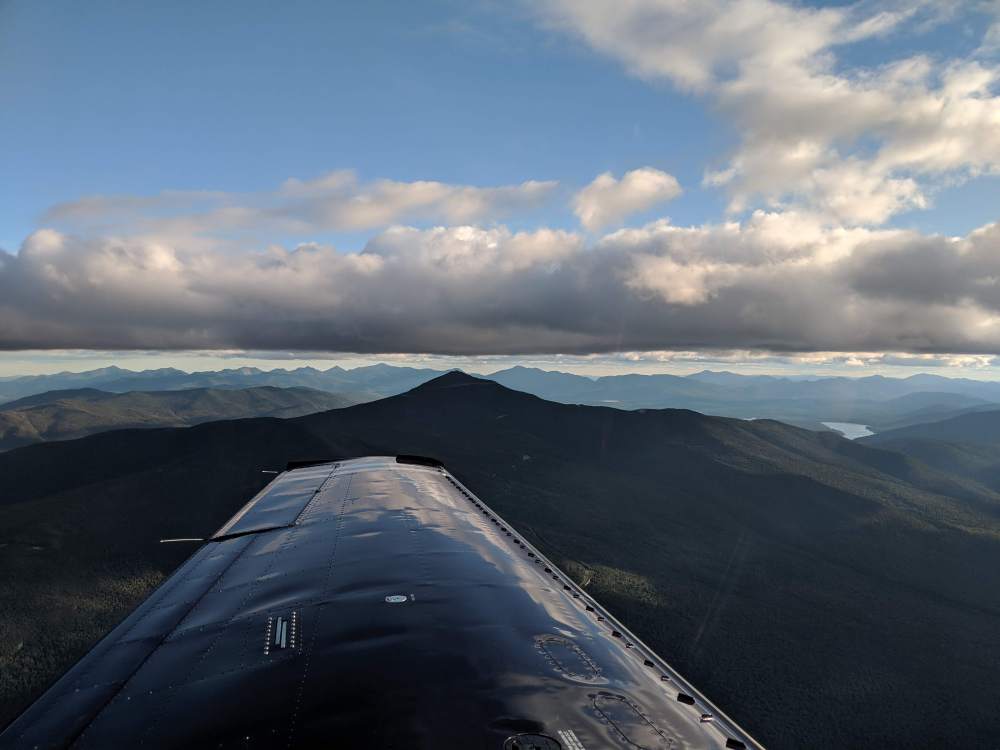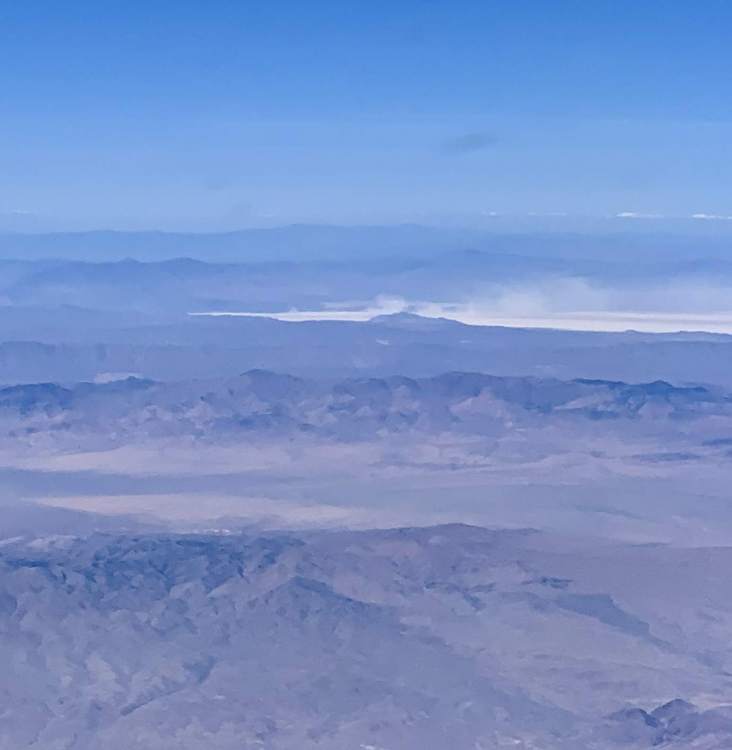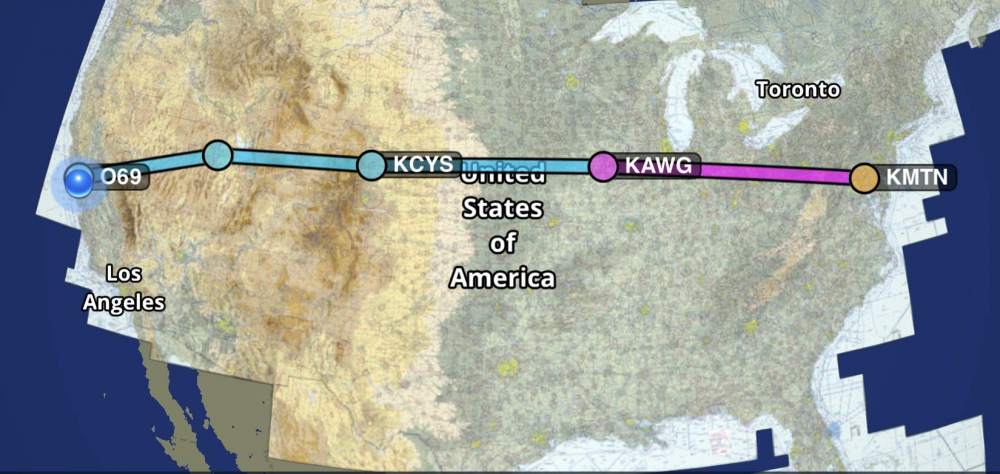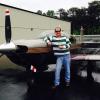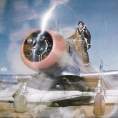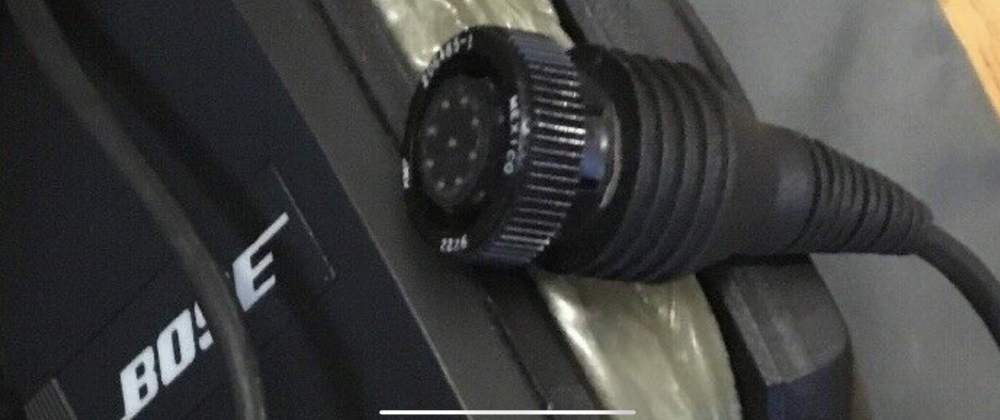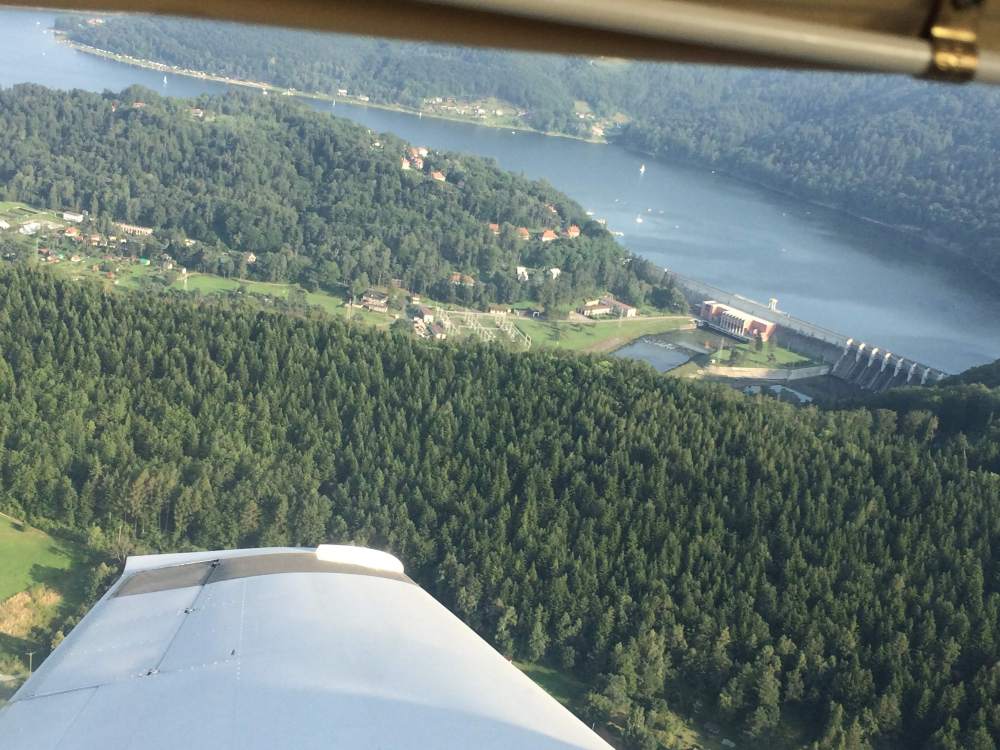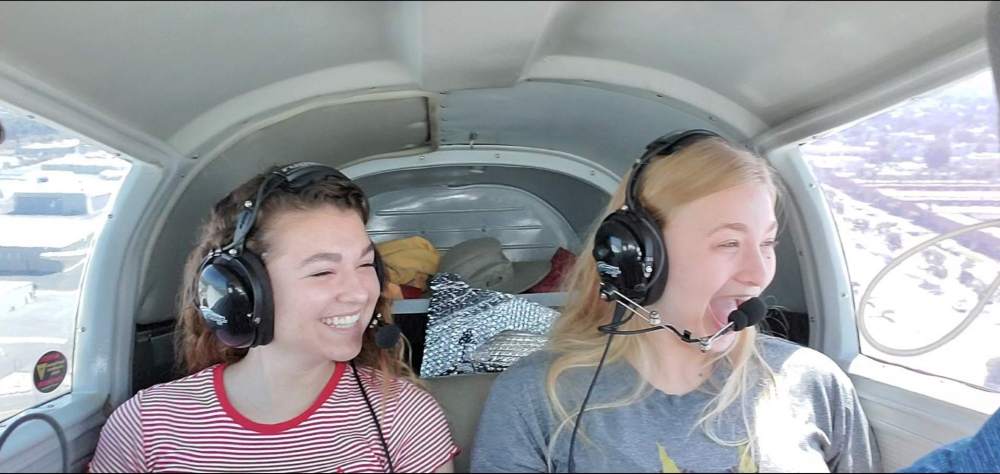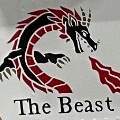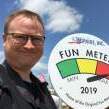Leaderboard
Popular Content
Showing content with the highest reputation on 09/01/2019 in all areas
-
When I am flying with someone, I judge their airmanship by how smoothly they fly the plane. If you're flying aerobatics alone, jerk the plane around as much as you want. If you're flying privately or commercially, fly for the passenger, even if it is just you. That means maneuvering the plane so a passenger doesn't know your doing it. That involves control pressures, not control movement. With control pressures I don't think it makes much difference whether its a Mooney or some other type airplane, the piloting is the same, the control pressures might be a little different..5 points
-
Today I had the opportunity to fly my previous Mooney 231 and my current S35 Bonanza back to back to back. I flew the Bonanza 57AZ-KRYN. Then I flew the Mooney 1:45 doing laps around KRYN at 7,500 ft to break-in two new cylinders that were just put on. Then I flew the Mooney to 57AZ. My son drove me back to KRYN where I picked up my Bonanza and flew it back to 57AZ. I'll deliver the Mooney to it's current owner on Monday. I've been flying the Bonanza since January and hadn't flown the Mooney for about the same amount of time. Thoughts/Comparisons: I did a very thorough preflight since the Mooney just came out of a four month annual. Taxiing the Mooney out I thought one or more tires or wheels was out of round. It was so bumpy and almost jarring. Then I remembered the rubber discs on the Mooney. The Bonanza just glides down the taxi way. Taxiing was a night and day difference. I did the run-up and pre-takeoff check list and all was well. Taking the runway the acceleration was noticeably slower than I was used to. The extra 75 HP in the Bonanza makes a huge difference. This was at a density altitude of 5,000 ft on the runway. When it came time to pitch up, the airplane didn't want to do that. It felt like the control lock was still on. I was concerned for ½ a second until I specifically remembering checking "controls free and correct" during the run-up. It took a lot more back pressure than I remember. Climbing out at 110 KIAS, just me and full fuel I was getting about 500 FPM climb. I did pull the power back to 35" at about 1,000 ft to slowly transition to 75% power as the IA wanted me to. Flying the Bonanza later I got 800 FPM at 110 KIAS and it was probably 5º warmer by then. Interestingly the fuel flow was identical. I knew this previously but the TSIO-360 at 210 HP in the Mooney and the IO-520 at 285 HP in the Bonanza, full rich each burn 25 GPH in climb. I climb both at 110 KIAS but get another 300 FPM in the Bonanza. After about 1,000 ft AGL I put the airplane on autopilot so I could more closely watch the engine monitor and I flew a racetrack pattern for 1:45 before beginning my decent to land. When I took the airplane off of autopilot I again felt like the control lock was on. In all axes it was so heavy, much more than I remember but I'm sure it was normal. The landing was straightforward. The IA removed the cowl and did a thorough inspection and gave the airplane his blessing then I flew it back to 57AZ. I used to love the feel of Mooneys, tight, precise and stable. But I've become spoiled by the amazing control response of the S35 Bonanza. There is simply nothing else out there like it. For many years I heard people saying that and didn't think much of it but once you've experienced it . . . I now know why people say the wonderful things they do about Bonanzas. The Bonanza also just feels so much better built. It is also a much larger airplane physically. There's only 350 lb difference in gross weight which is roughly 10%. When stepping onto the Mooney wing the step up wasn't that high; it is much higher in the Bonanza. Fueling the Mooney, the fuel nozzle on top of the wing was below my waist. Fueling the Bonanza a couple of hours later, it is well above my waist. While there is little practical difference in cabin width, the shape of the cabin and huge windows in the Bonanza make it feel so much larger inside. (The P210 I sometimes fly feels like I'm looking out the window of a tank, for comparison.) The Mooney is more efficiency, no argument. I used to fly my 231 at 9.0 GPH for +/- 155 KTAS. I fly my Bonanza at 12.5 GPH for 170 KTAS. I would probably still have this Mooney if not for the 892 lb useful load. My Bonanza has 1,114 lb which is significant for me. I've owned 16 airplanes, four of which were Mooneys. Most of them I owned for a year or two. I may keep this airplane a long time.4 points
-
4 points
-
4 points
-
The turbonormalized A36 that I have several hours in, along with a gusty crosswind landing before I hit 200 hours, flew well. The autolean feature was nice, the climb was great, but the fuel flow was significantly higher than my C, enough so that it would have been difficult for me to maintain proficiency much less train intensively for IFR. Kind of like when I drove a friend's new Mercedes V12 coupe ~2012; it was much nicer than my XJS V12 convertible, but not something I could realisticly expect to own & operate. My friends load a lot of stuff through their big barn doors, but I'm pretty good at packing my short body, too. Need to find pictures. When I flew relief after Hurricane Florence, I arrived at RDU in just over 2 hours plus about 20 minutes vectoring for spacing to land. Planning my first trip without refueling, I was the only single I saw on the page-and-a-half list with more than 350 lbs available (with half tanks and just me, I had > 600 lb useful load). Being a short body, I ran out of cubic feet well before useful load, but I took everytbing that I could fit, including unpacking boxes and putting things in gaps. It's all about what plane fits your pocketbook and your needs.3 points
-
Follow up on thread - fixed !! To recap the problem - my pitch servo would either work perfectly or oscillate wildly - no rhyme or reason as to when and where. It would often do both on the same flight. Smooth air or turbulence made zero difference. The oscillations recently got so bad that the altitude hold would slam the nose 10 degrees down suddenly for no apparent reason. I wondered if Boeing had secretly upgraded the firmware without telling me Per the STEC folks at Oshkosh this year, there are about a dozen causes for this problem. Simple stuff I looked at that failed to identify or fix the issue: - “exercising” the servo per the manual - looking for moisture in the static lines - trying it on alternate static - leaving it slightly out of trim - checking cable tensions on the pitch servo - checking electrical contacts to the pitch servo So I figured that I was looking at an issue with the pressure switch, the control module, or the servo itself that was going to cost me serious $$$ to get sorted. But the intermittent nature of the problem made me think it was just a loose contact somewhere. First thing I tried was crawling under the panel and finding the connector between the pressure switch and the control module. I painted the contacts with Stabilant 22. Hurray!!! Blind avionics squirrel finally got a nut on his own3 points
-
I flew a rather interesting SID and VOR DME approach the other day. Lots of arcs and a circle to land from 15 to 33.. Hope you enjoy.2 points
-
Labor Day weekend trip to Canada with my wife and her mother. We departed Linden (notice the deer by the runway at high noon) and flew directly to Gatineau CYND just outside Ottawa in my Mooney M20J 201. We were met by Yves and his wife. Remember my return from my previous Canada trip where Yves invited me to fly his wing at Oshkosh while I coincidentally was flying over his house? Well, at Oshkosh, Yves and his friend Patrick invited me to their Casey camping fly in trip Labor Day weekend so I decided to go. We got dinner with Yves and Ned in a fantastic restaurant and were served by Yves lovely daughter. In the morning the weather wasn't too great so we delayed a bit. But early in the afternoon we set off to Casey in formation down low to stay below the cloud deck. It was a pretty turbulent day and combined with the low altitude, it just was not practical to maintain tight formation so we kept it loose. Casey is an abandoned Military airport in the middle of the Canadian wilderness northeast of Ottawa, northwest of Montreal. Once a year, the Canadians have a big get together by flying into this well-paved runway in the middle of nowhere. A few spend the night camping but most arrive as a day trip on the Saturday or Sunday for the barbecue event. We found wild blueberries and my mother in-law especially enjoyed collecting them. We watched the airplanes arrive by both land and water. Several seaplanes landed on the river beside the airport. There is no cell signal, phone service, electrical power, or anything out there. Only what you bring. So we enjoyed a night of camping and the barbecue and headed out the next day. The return flight required us to get above the cloud deck so I climbed IFR in uncontrolled airspace on my own until I got high enough to be able to reach flight service and file a return flight plan in the air. I couldn't file on the ground due to the lack of communications. Luckily I had already made my US customs arrangements in advance and stuck to my time slot so those remained active. A quick flight back to Albany and we cleared customs and then onward to Linden to conclude the exciting 3 day trip.2 points
-
. . . said the Dentist to his patient.2 points
-
Haha. We're not making lawyer money.2 points
-
You guys should splurge for Mooneys with dual alternators!2 points
-
The important thing is you landed and checked the mechanical condition. Too often I see people say, "Oh, I can continue without the alternator". Yes you can but can you continue with the alternator banging around inside the cowl, or the belt flopping around or a bearing smoking? After you assess the mechanical condition, circumstances dictate your ability to continue. Airspace, time of day, comm all factor, just remember, aircraft batteries even ones in good shape do not have that much reserve capacity. Oh and the next time, stop in at KGVL, be happy to let you use my hangar and tools, I even am on good terms with my IA there to help you!2 points
-
The lateral stability is almost neutral on a Bonanza. A Mooney is slightly positive. I like to fly both, the Beech is fantastic in VFR, and the Mooney is easier IFR.2 points
-
They should be calibrated every two years, lest they drift. The Mooney Summit has a set of calibration equipment. For model comparison, I'm about to look at lazy @mike_elliott's list, since mine disappeared during this year's stupid extended annual and hangar move . . . I used to have the cheqp one. Thanks, Mike! You're less lazy than many.2 points
-
This is what the old Series 1 plug looks like. Bose updated their plug to a smaller 6 pin Leno plug around 1996. since all all of the wires are up there, and avionics shop maybe be able to use those wires for a new 6 pin interface. The purpose of course was so that your headset could run on ships power rather than batteries.2 points
-
Let go of a trimmed Mooney for a minute or two. It flies on and on. The dihedral keeps it flying straight. Now do the same in a Bonanza. After 20-30 seconds it rolls off into a spiral dive.2 points
-
You have 2 of the Mooney Pros, Inc. instructors close by who can help you really learn your new plane, its proper ops and assist you get the most from your ownership. Paul Kortopates @kortopates owns a 252 is an engine guru, A&P and @donkaye is just down the street, so to speak. You will be $$ ahead to get with them vs buying starter adaptors often, etc.2 points
-
I owned a Bravo and have recent Ovation time. The Ovation would cost at least twice and probably three times what I have in the Bonanza. It would be both more efficient and faster than the Bonanza (assuming a 310 HP version) but wouldn't give me the useful load I need. How's that for a quick and dirty comparison?2 points
-
Bonanza is a bigger, more powerful, and more useful load airplane than a Mooney and it takes a third more fuel do to it. If you need that, buy one. In IMC, a Bonanza is a lot easier to lose control and either break it up or crash. That heavier control response is called stability and makes for a safer airplane in the soup.2 points
-
2 points
-
Remember that we don't have to go crazy. Many of the fields and data which may mean something in other ICAO countries aren't necessary to either file or get the ATC servuces we want in the US. The many of us who have received a direct to an airport when filing /U should realize this almost intuitively. There are a few articles on minimalist filing, including John Collins' one for ForeFlight. FWIW, I have gleaned my own minimalist list from the articles: Most Simple is SGBR Everything in the US pretty much covered by SGBR PBN/C2D2S1 S = Standard (VOR, ILS, VHF radio) G = GPS B = GPS APV capability R = PBN; requires the "PBN/" entry in the "Other Info" field PBN/ C2 = GNS RNAV 2 capability D2 = RNAV 1 capability S1 = RNP approach capability2 points
-
Not exactly today's, but Saturday, August 24 2019 was my first flight in my M20K. After a few dozen of practice circuits and some time for me to calm down from all the excitement, we took N4041H for a spin EPKP - EPNT - EPNL - EPKP. Not even a XC, but we have to start somewhere... Happy to report the plane, and all on board, survived. N4041H's new home - EPKP Approaching EPNL Joining right downwind to 09R at EPKP.2 points
-
Saturday my wife and I took a couple of the young women from her church group along to the Camarillo Air Show. @MrRodgers had worked out a discount (one ticket gets everyone in the plane into the show) so of course you need to fill all the seats! Neither of the girls had ever been in a small plane before, but they loved it! You can see the excitement as we took off from KFUL. Hope you enjoy the post and the short video. Camarillo Air Show2 points
-
I just received this sale offer from Sensorcon. It's a flat $30 discount but only valid this weekend. If you choose the Basic model it saves you a few bucks over the 20% discount that @DanM20C was able to get for us. www.Sensorcon.com, Promo Code LABORDAY2019. Cheers, Rick Take advantage of these great offers from Sensorcon! Use Promo Code LABORDAY2019 at checkout for $30 off! Offer Valid Friday 8/30 - Monday 9/2 Max quantity of 4 items per product type per order* Sensorcon Carbon Monoxide Basic Inspector INS-CO-01 $129.00 Sensorcon Carbon Monoxide Industrial INS-CO-02 $149.00 Sensorcon Carbon Monoxide Industrial PRO INS-CO-03 $169.001 point
-
1 point
-
Thanks for the video. Really appreciate it. I'm thinking about an Airtex interior. @Mark M20B, would you not go with the additional foam in the seats, which would save you from having to buy new yokes and seat belts? Is that an option?1 point
-
My autopilot comment wasn’t to justify the Mooney’s controls. I’m telling you for long distance and IMC hand flying I prefer the Mooney. I also enjoy the balanced controls of the Bonanza. I don’t consider the tail wag of the V tail to be perfectly harmonized. I will be flying my Kitfox for local flights and pattern work which will be more fun on the controls than both planes. Bonanza’s do have a better baggage door and baggage volume for sure, I’m not denying that. But you have to admit that there are sensitive CG considerations when loading your plane closer to gross. Your plane might have a great CG but generally it is a big conversation with other Bonanza owners. When you put all 270lbs in the back what can you put up front? Bonanza’s and Mooney’s have many amazing attributes. I like both planes and the Mooney currently fits my mission profile. As of now I like the load and go of the Mooney. I just wish I didn’t have to maneuver and manipulate large items into the baggage area.1 point
-
1 point
-
I used to say the same thing about handling. I justified the handling on my Seneca the same way. It is on autopilot 90% of the time so what does it matter. But once you regularly fly an airplane with controls as perfectly harmonized as the Bonanza is, maybe you would see things differently. The baggage area is one major difference between Bonanzas and Mooneys. All Mooneys have the same dimension door, and the lift up and over requirement and I believe all have the same maximum weight (120 lb?). I have the large baggage door in my Bonanza which is much lower than a Mooney and the volume is about three times that of the Mooney. The maximum weight of 270lb is a bit higher than the Mooney too.1 point
-
International avionics, 972-247-7498. They are the OEM and do the repairs Regards, Frank1 point
-
Some planes have no electrical system. Some of us have transponders but will not have ADS-B. We all need to watch out the windows all of the time.1 point
-
1 point
-
@Ken Whitaker I looked on your approved aircraft list and Mooney isn't listed. Is this an old list? Also, it's very difficult to read sideways. Thanks! Dustin1 point
-
Typically there are two common sizes... The larger one, fits under a spark plug... (less appreciated 50°f variation) The smaller one, fits under the bayonet TC holder... (better location, still a 25°F variation) Check to See if that is what you have to decide from... Also... Some Mooney ship’s gauge CHT sensors are thermistors and not TCs (thermo couples). PP thoughts only, not a mechanic. Best regards, -a-1 point
-
Funny - this happened to me during my solo cross country in a 172 in 2004 . . . out of PDK!! Landed in Dalton, GA (if my memory serves correctly) instead of Chattanooga, TN. Called the flight school, they said that if I could get the engine started, load shed, and fly back to PDK, and then if I could, contact the tower and land. If I couldn't, they'd be in the tower and look for the light gun. I was stupid and said OK! I shed enough, turned the transponder back on once I was in 60 miles, and had plenty of juice on the one radio for the tower who cleared me to land as soon as I made contact about 10 miles out. I used dead reckoning and approximate headings to fly back. Not bad for a newbie with less than 40 hours. My first indication of issues is what I tried to reach Chattanooga approach in TN and they couldn't hear my transmission but I could hear thiers. Then my Garmin 430 screen died. I scanned and saw the low voltage indicator. I turned away from the airspace I was approaching (class C), load shed, and landed at the uncontrolled field as indicated. In hindsight and after many years experience (and still gaining more every day). AOG - get it fixed, send out a ferry plane or pay for my taxi ride home! -Seth1 point
-
Recycling the field circuit breaker often will restore power. Otherwise, load shed and you can likely continue the flight. I did a VFR checkout with a guy in my plane and the voltage light came on. We turned everything else off but the transponder and the COM2. Flew another 45 mins including 3 gear cycles. Still had enough juice to start the engine.1 point
-
Sensorcon has donated 3 Inspector and 2 inspector Industrial CO detectors to the Mooney Summit VII for part of our raffle offerings! Thanks Molex!!!1 point
-
I’ve had better experiences with the Trig. It’s a solid radio. The A210 was a design disaster with the need to remove the faceplate to access the tray removal screw. I think the 220 fixed that. The SL40 should be the same height as well. Although it’s not made any more, I think it’s one of the best radios ever made.1 point
-
I think Ross’ original question where he referenced a mechanic stating that any used part required an 8130 is actually more interesting. You A&Ps can correct me if I’m wrong, but it’s my understanding that the issue is that the logbook signoff attests that the aircraft is airworthy and therefore the installed part must be airworthy. If it comes with an 8130, someone else has attested to its airworthiness. In the absence of an 8130, the A&P is on the hook to determine if it is airworthy. Whether a mechanic is willing to install a used part with no 8130 depends on his ability and comfort with that determination. I had a bad WX 900 display unit and replaced it with one I bought on eBay with no 8130. My A&P/IA had no issue looking at it and signing it off. But suppose I similarly replaced my KC 191 autopilot computer with an eBay unit - would he be as comfortable approving it knowing I fly it IFR and it’s a more complex and safety-critical piece of equipment, and he has no way to bench test it? Skip1 point
-
They are planning to go to Casey, a disused operating base used during the 50s and 60s for CF101 Voodoos and support aircraft as part of our NORAD commitment - specifically the Mid-Continent radar system called the Pinetree line. One of the Communications Squadrons I commanded provided the Comm Det to one of these Pinetree sites and Canadian Forces Base Bagotville (home of two F18 squadrons) during the 80's. Casey's runway is still there and is the object of an annual fly in from pilots across Quebec and Eastern Ontario. See video below for a recent look at its condition. It is somewhat like the annual pilgrimage in winter to Alton Bay, New Hampshire with a couple of exceptions (beyond the difference in seasons). There is no telephone reception at all near Casey. Since "prior preparation and planning prevents p___-poor performance," I have yet to go with Yves for the corn roast they host and the overnight camping. For those of you who met Patrick (he flew with Yves in the this year's Caravan), you may not also know that he is one of the organisers of this annual event. At any rate, I am off to Bangkok in a few hours and was going to miss this year's Casey trip anyway. Good luke to Yves, Dianne, Mike, Mariane, and Anna. Fly Safe folks.1 point
-
Ok Scott, I’m a fan of you and your posts, but think about it ..... you are still getting service from a company that hasn’t produced your conversion in, what, 15-20 years? As a business owner, that’s still something that deserves a “little “ appreciation. Next time post on the forum your request. Some dumb sh*t like me might have pictures or a spare they can supply for less money. (Coming from a guy flying a Lancair 15 years out of production and appreciating ANY support from the OEM). Tom1 point
-
For easy greasers- make sure the aircraft is stabilized in trim and airspeed. I've found most new owners tend to try and hold pitch with continuous back pressure on final and really haul it back to flare, nowhere near trimmed. Most "aha!" moments are when they realize if they just trim it out, it will flare with much less pressure. Also, spending 5-10 minutes doing slow flight to give the prospective new owner the "feel" of the controls at 65mph and how mushy they are compared to cruise forces results in less over-controlling on round-out. Not a CFI, just sharing my $0.02.1 point
-
+1 for CO monitor. A lot of added safety for 0.1 AMU. A digital monitor with PPM readout will give you a “health check” of your exhaust baffling before it becomes a safety issue.1 point
-
Sorry I read this one so late. Seems like it was all hashed out pretty well... even convinced PTK that his initial thoughts were wrong I think? One thing to mention, the IF altitude in the example is an at/above altitude (single line under the altitude). There are many times I’ve been cleared to begin an approach above this minimum altitude. Maybe it’s just out west? Maybe it’s just the approaches I fly? Either way, it’s up to you as the pilot to figure out if this higher altitude will work for your descent and request lower if it won’t. At KPUW, I’ve been cleared for the VOR approach when 5,000’ above the IAF altitude with no expectation of lower clearance. Of course, there’s a good long holding entry to descend in. Also, when not to do a PT from AIM... SNERT acronym. Straight in, No pt routing, Established in holding, Radar vectors, Timed approaches (nobody does this anymore).1 point
-
Have less fear.... 1) But get to know where exhaust can enter that piece of hose... it comes from upstream... 2) If the exhaust is leaking out of an exhaust tube, and that hose was missing, and you had the slide gate open to get air/heat into the cabin... see the slide gate control wire? The bigger problem is hot gasses being released under the cowl.... a large fire risk... 3) A broken heat muff allows exhaust into the heat system... using the heat allows the errant exhaust into the cabin... 4) The heat muff surrounds the muffler... and hides the broken parts... 5) Got a CO monitor? Now is the day to order one... Best regards, -a-1 point
-
We put 1,000 miles of travel on our 67 Mooney M20F (N9268M) this past week. Las Vegas, NV. Camarillo, Van Nuys, San Luis Obispo (Oceano Airport). It is really great to finally get out and stretch the distances I fly while utilizing my transition training from Light Sports. The Mooney is such a fantastic platform and I can't wait to do more long distance trips. The West Coast Mooney Club. Gotta Represent! Packed all the camping gear and ready to head home from a long week of traveling and fun. Departing Oceano Airport. The marine layer delayed our return by one day and just hung over the airport. We saw a patch of blue and took off back to Van Nuys. Sunset Approach along the Pacific Coast into Oceano Airport for Movie Night and Camping. Mooney In The Mist. Oceano Airport. Oceano Airport View of the Red Rock Area on approach into Las Vegas. 185 mph in level flight in cruise at 9,500 MSL. Loving all the speed mods on my plane. IMG_4387_(1).MOV Crossing the Mojave Desert on the way back to Van Nuys Camarillo Airshow with the West Coast Mooney Club.1 point
-
Your pressure seems low. What is it with the electric on? It should be about 25 PSI. When it drops below 15 or so the engine usually starts to stumble. If it shows low with the electric on, I would suspect a sensor problem.1 point
-
From Jenny tonight... Things are looking better! Good news today[http://mobile-mail] mike elliott, Jenny Brandemuehl has posted a new announcement for Family & Friends of Mark Brandemuehl. Hi All, I haven't talked directly to Dr. Peck but through Mark's nurse, she let us know that he didn't see anything concerning on Mark's body or his vitals today. She said that Mark may go into surgery next Thursday but not anytime soon unless his condition changes suddenly. I'm inferring that we need to wait until next week for Mark's upper left arm biopsy results to confirm if Mark's fully free of the fungal infection. You may remember that we were told Dr. Peck would need to have Mark in surgery this weekend or early next week to assess for fungal infection on his back and arms (yes, again) and excise infected tissue as needed. Let's just pray that his current stable state continues through next week and no new infection shows up. God knows, poor Mark could use the rest and recovery time for his amputations and to rebuild his strength. Continued heartfelt gratitude to you from our family for your prayers, positive and healing thoughts for Mark. You are receiving this message because you are a member of this community. You may unsubscribefrom receiving announcements at any time. Thanks for all you do to help others, Your friends at Lotsa Helping Hands [emoji2398] 2019 Lotsa Helping Hands | 118 N Peoria 2N Chicago, IL 60607 Sent from my Pixel 2 XL using Tapatalk1 point
-
Yes, it is just as possible that filling an ASRS with the obvious intention of doing so to attempt to avoid any FAA action will obviate its protective purpose. Consider that the immunity from enforcement action is an FAA policy, not regulation, and they are the ones interpreting that policy. Filing an ASRS without, for example, explaining what type of corrective steps could be taken and why, would probably not be interpreted by the FAA as a "constructive safety attitude."1 point
-
1 point





